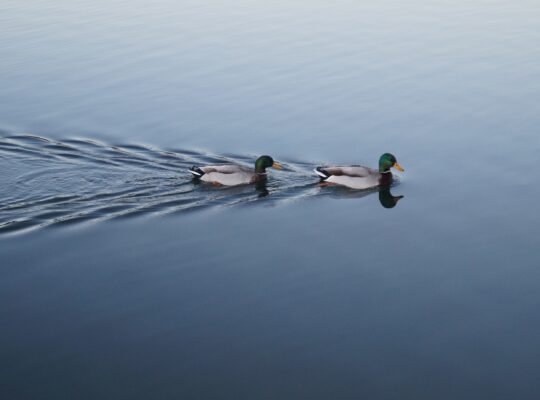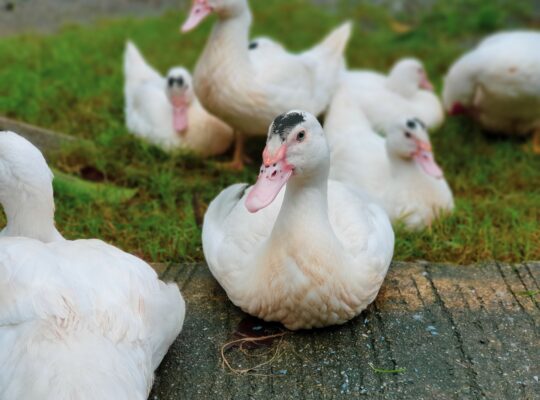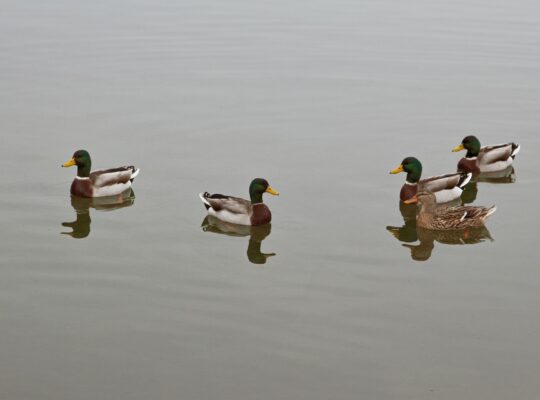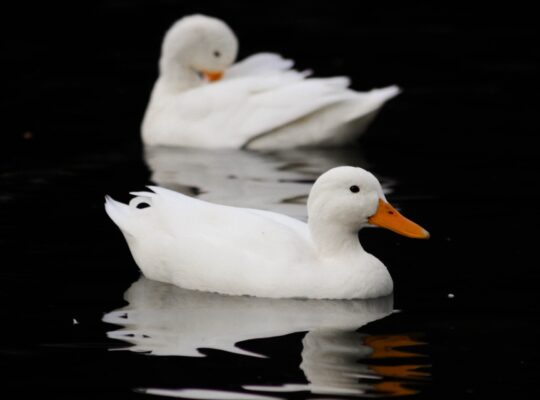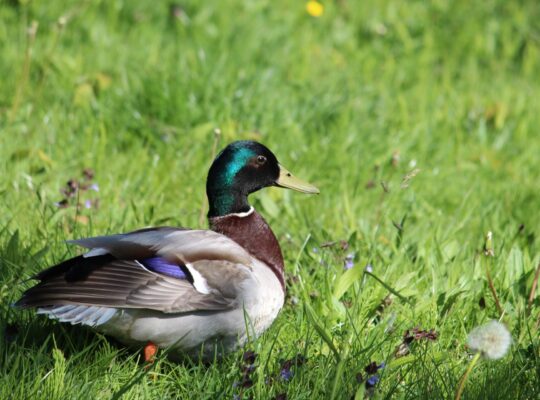Ducks are migratory birds noted for their great-distance migrations. Ducks may migrate across short or vast distances, depending on the species. Some ducks migrate within their home range, while others travel long distances to other continents. The space they travel in a day during migration is mainly determined by variables like weather, species, and habitat.
Ducks may travel between 10-25 miles per day during migration. During migration, however, certain duck species, such as the Mallard, may travel up to 500 miles daily. Wind speed, direction, and altitude can all impact the distance traveled during migration. A strong tailwind can assist ducks in traveling further and faster, whereas a headwind can make their journey more difficult.
Ducks usually fly at 40-60 miles per hour at 200-4,000 feet. They often fly in a V-formation to save energy and take advantage of the draw created by the birds in front of them. Ducks can soar for many hours without stopping, but they also take stops to rest and eat.
The period of migration varies based on distance and location. Sure, ducks that nest in the Arctic tundra and migrate to the southern hemisphere, such as the Northern Pintail, may travel nearly 8,000 kilometers in a single excursion. This migration might take many weeks.
Ducks migrate for various reasons, including breeding, foraging, and escaping severe weather conditions. They are highly acclimated to long-distance travel, and their bodies modify physiologically to prepare for the voyage. They, for example, increase their fat stores to supply energy during migration.
In summary, ducks may travel between 10 and 25 miles per day during migration, while certain species can travel up to 500 miles daily. Variables like wind speed, direction, and altitude may impact the distance they traverse. Ducks often fly in a V formation to save energy and use the draft the birds created before them. Migration times vary according to distance and location, and some ducks may fly over 8,000 miles in a single voyage.
Where Do Ducks Sleep During Migration?
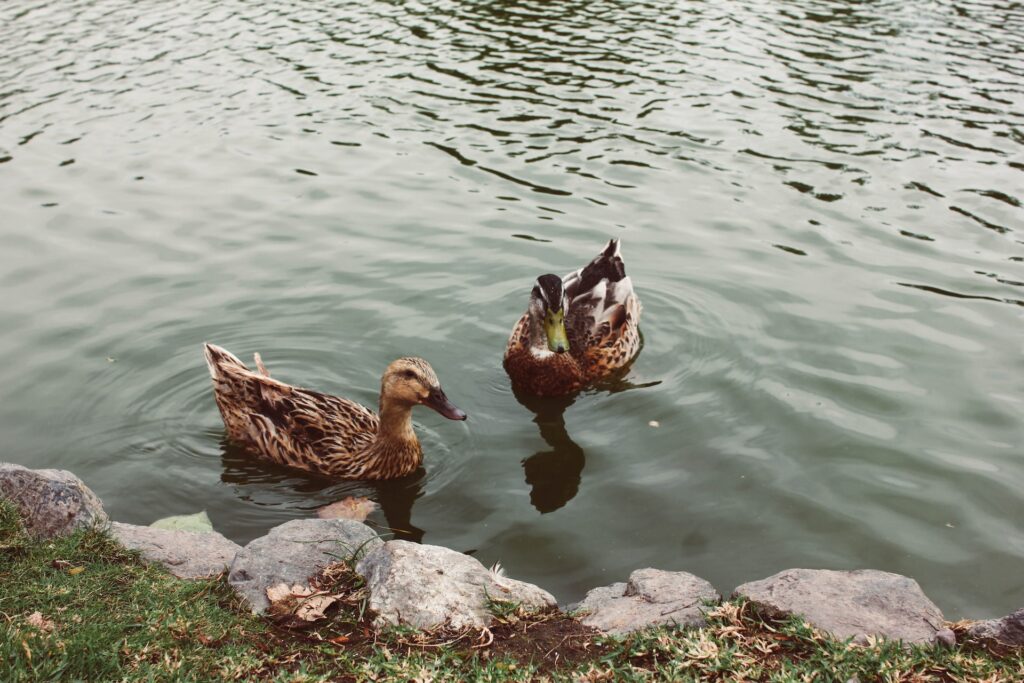
Ducks will often choose to roost in wetland regions or in bodies of water such as lakes, ponds, and rivers when they migrate. Throughout their lengthy migrations, the ducks may use these locations since they provide them safety from potential dangers and a place to relax, allowing them to save their strength.
There are duck species that are more comfortable roosting in the water, but there are other duck species that are more comfortable straddling on land. Mallard ducks, for instance, have been seen to perch on the ground throughout the night, most often in places with long grasses or other vegetation that offers shelter from potential predators. Sure, ducks, like the black duck and the pintail, find it more comfortable to roost in the water, where they may float and relax without fear of being attacked.
Ducks will often roost in big groups, which not only affords them an increased degree of security against potential enemies but also enables them to preserve their body heat by huddling close. Ducks may spend each night of their journey roosting in a different site, depending on the accessibility of adequate habitat and food supplies.
Ducks have been found to roost not just in wetlands and other bodies of water but also in agricultural fields and other sites where they may graze on crops or grain left over after harvesting. This may be particularly prevalent in regions where wetland habitats have been destroyed due to construction or other forms of human activity.
It is crucial to remember that the availability of proper roosting habitat is essential to the survival of migratory ducks. This is something that should be noticed. The destruction of marsh habitats and other natural areas may wreak havoc on duck migratory patterns and make it more difficult for ducks to locate safe places to sleep. Duck populations may be kept in good condition and their yearly migrations can be ensured with the aid of conservation activities that focus on protecting and restoring wetland ecosystems.
Do Ducks Return To The Same Place?
Ducks return to the same location year after year, whether it be a breeding ground, a shorebird area, or a stopover point when they are migrating. This pattern of behavior is referred to as site fidelity, and many migratory bird species show it.
It is often believed that ducks have an excellent sense of direction and a sharp recollection of their immediate surroundings. During migration, they use a wide array of navigational signals, including the location of the sun and stars, the magnetic field of the earth, and visual landmarks. To identify their usual habitats, several animals rely on scents.
Ducks often breed and raise their young in the same area year after year throughout the breeding season. This is because ducks are monogamous. They choose breeding grounds that provide the essential requirements for successful nesting, which include food, water, and shelter for the eggs. They are also impacted by social variables, such as the presence of other ducks, and may return to locations where they have previously found a mate. Social influences include the company of other ducks.
Ducks spend the winter months traveling to warmer climates that provide a greater variety and quantity of food sources. They often spend the winter in the exact locations year after year, mainly if they have successfully reproduced in that region. Since they provide a reliable food supply and a safe haven during the brutal winter months, these wintering grounds may be critical to some species’ continued existence.
During their annual migration, ducks often stay at the exact locations throughout their journey. While traveling long distances, these locations are essential for providing spots to relax and refuel. Ducks can save both their energy and their time by staying in areas that are known to them. This is because they know exactly where to locate food and refuge.
In summary, ducks return to the same location year after year, whether it’s a breeding ground, a wintering spot, or a migratory stopover. This is known as site fidelity and is seen in many migratory bird species. Ducks navigate and identify familiar environments using several signals, and returning to the same area may be critical for their survival and reproductive success.


